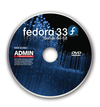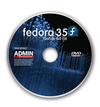
Lead Image © Alexandr Marinenko, 123RF.com
Server administration using Cockpit
Control Center
Cockpit [1] lets you manage a remote Linux system through a browser window. An administrator can take a look at the systemd journal, check the load, and start and stop services. Thanks to responsive design, the user interface automatically adapts to different screen sizes which, in turn, facilitates easy access via smartphones.
You can also easily switch to the command line, start web servers there, and create new user accounts at any time. They then appear in the web application, and you can use them to manage multiple Linux systems. To this end, just draw attention to Cockpit on the remaining servers, on which the software must also be running.
This functionality makes Cockpit – developed by Red Hat – similar to the well-known Webmin [2]. The user interface which, according to self-promotion, is easy to use and "very lightweight" especially appeals to less experienced administrators. However, Cockpit is also suitable for managing a home server or smaller business networks. Users should not mistake the tool licensed under LGPL 2.1 for the similarly named openITCOCKPIT [3].
All Inclusive
Red Hat has not even been working on Cockpit for a full two years. The work on it can now be done openly on GitHub [4], but those who observe the project will note its closeness to Red Hat (e.g., the distribution used). Also, Fedora 21 Server, CentOS Atomic, and RHEL Atomic are already preinstalling the tool for server management. Fedora 21 Workstation and Arch Linux only have finished packages. In Fedora 21 Workstation, the command
yum install cockpit
installs the control center.
Users of Arch Linux can install the cockpit
...Buy this article as PDF
(incl. VAT)
Buy ADMIN Magazine
Subscribe to our ADMIN Newsletters
Subscribe to our Linux Newsletters
Find Linux and Open Source Jobs
Most Popular
Support Our Work
ADMIN content is made possible with support from readers like you. Please consider contributing when you've found an article to be beneficial.






